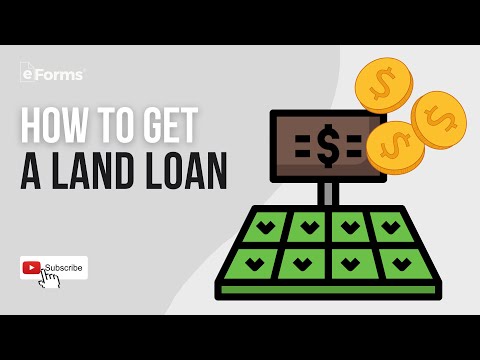Untangling the Enigma of a Lot Loan
A lot loan, also known as a land loan, is the financial key that unlocks the gates to the ownership of a piece of land. With its origins planted in the realm of real estate, it facilitates the process of buying a patch of land to build a home or host a business. The financial landscape may seem dense and hard to navigate, but understanding the context of lot loans will make your journey easier.
The Context of a Lot Loan: A Comprehensive Overview
Dive into the vast ocean of finance, and you’ll stumble upon the precious pearl called a ‘lot loan.’ But what is it exactly? As per an update on October 23, 2023, a lot loan is typically a short-term, two to five-year commitment employed to fund the purchase of vacant property. Unlike home mortgages that span 15 to 30 years, land loans end in a balloon payment—an extensive sum paid at the end of the loan term.
Rooted in the law of supply and demand, lot loan dynamics are somewhat straightforward. As land is a finite source, owning a piece of it can be a smart move. But tread lightly, for the path is steep with high interest rates and substantial down payments, marking the journey as a risky one for both borrower and lender.
Navigating the Dynamics of a Lot Loan: How Does It Work?
Imagine a boat coursing its way across a river—the boat being your loan application, and the river being the process of acquiring a lot loan. The lender examines several variables before giving you the green light. Credit score, intended use of land, loan-to-value ratio, and your potential to pay off the loan serve as significant waypoints in this journey.
Is sailing solo not your style? Consider bringing along a co-signer, their sound financial standing might steer you towards favorable loan terms.
Types of Lot Loans: Apprehending Your Best Fit
Here’s the deal—there’s no one-size-fits-all lot loan. Tucked within the landscape are various loan types: raw land loan for unimproved land, a land development loan for investments, and a construction-to-permanent loan tailor-made for land-to-home projects.
Essentially, your loan type takes root in your land-ownership goals. With a bit of research and financial introspection, the ideal lot loan will reveal itself.

Everything You Want to Know About Applying for a Lot Loan
Now that the fog has lifted off the lot loan landscape, we’re ready to step towards application making. Rolling up into this process are the pre-requisites you need to meet, the step-by-step process, and the potential hurdles along the route.

The Pre-requisites: Priming Your Application for a Lot Loan
As you’ll see in “How To buy land,” each lot loan application undergoes thorough scrutinization. From your credit history to a future-ready plan, every detail must shine under the lender’s microscope. A solid debt-to-income ratio, a high credit score, and a substantial down payment can get your application off to a flying start.

Step-by-step Process: Deciphering the Route to Acquiring a Lot Loan
Acquiring a lot loan isn’t like taking a leisurely stroll in the park. Rather, it’s like meticulously plotting a path on a well-detailed map. From pre-qualification to final closing, the process comprises several calculated steps.
Adorn these steps with patience, diligent planning, and robust paperwork for a smoother journey.

Potential Challenges and How to Overcome Them: A Detailed Guide
In the realm of lot loans, you might find yourself face-to-face with intense approval requirements. Land valuation issues, zoning restrictions, and environmental factors can stonewall your progress. But don’t fret, your balloon of hope need not burst. A well-outlined land plan, environmental assessments, and proactive communication with your lender can help you avoid these pitfalls. Like actress Alyson Hannigan, who overcame her struggles by turning them into stepping stones, facing your loan application challenges head-on can lead to long-term triumphs.

| Subject | Description |
|---|---|
| Loan Type | Land or Lot Loan |
| Loan Usage | Financing the purchase of a plot of land for building homes or business purposes |
| Loan Similarity | Works like a mortgage, but the money is used to buy vacant property |
| Risk for Lenders | Higher than regular mortgages as there is no home to serve as collateral |
| Loan Term | Often short-term, typically two- to five-year loans followed by a balloon payment |
| Regular Home Mortgage Term | 15 and 30 years |
| Exception Loan Term | Longer terms available in special cases, particularly for building a home |
| Loan Disbursement Date | October 23, 2023 for land purchasing and May 23, 2023 for home construction |
Advantages and Disadvantages of Lot Loans: A Balanced Perspective
Just as every coin has two sides, a lot loan also offers a mix of potential gains and formalities. From flexible land use to property appreciation, there’s a lot to be gained. However, the path to land ownership isn’t devoid of thorny obstacles. Not unlike the paradoxical frames of the ‘Gentle Monster,’ this journey involves seeing the full picture, with all its benefits and challenges.
Accomplishments: What Potential Does a Lot Loan Hold?
When it comes to the advantages of a lot loan, they are not too far from sight. For starters, the sheer sense of ownership you’ll exude after acquiring a plot of land is unparalleled. You have the flexibility of using the land as you see fit, preparing it for a dream project, or using it as a business premise. If the land’s location is prime, you’ll stand a good chance of selling it for a profit in the future. Visit our page on “Is land a good investment” for deeper insights.
Drawbacks: The Downsides of Opting for a Lot Loan
Just as Stuart Little’s world was a maze of challenges despite its size, the world of lot loans also has its share of hurdles. High down payments, short loan tenure, and relatively high interest rates can certainly make the journey taxing. Plus, the risk related to land properties, owing to zoning limitations and the lack of physical collateral, pushes the risk meter towards the higher end. It’s akin to navigating “unimproved land”—risky and demanding a well-strategized approach.

Analysis of the Best Banks for Land Loans: A Comparative Breakdown
As the saying goes, not all banks are created equal, especially when it comes to lot loans. Banking on the ‘best banks for land loans’ can catapult your land loan journey toward success. When selecting your ideal lender, consider factors such as interest rates, loan tenure, down payment requirements, and the bank’s reputation. A comparative analysis of market leaders—showcasing their unique features and benefits—can illuminate your choice.
Factors to Consider: Choosing Your Ideal Lender
Your ideal lender, much like a well-fitted hat, should ideally facilitate your needs and suit your style. The interest rate, loan term, and customer service are primary elements to consider when choosing your lender. But, don’t forget the finer details—the bank’s track record, online access, and lending practices can often make or break your experience.
Reviews and Highlights: Profiling Top Banks for Land Loans in 2024
Loan terms, interest rates, and down payments—they all form the holy trinity of land loans. While the best banks for land loans all have their silver linings, it’s essential you find the one shining brightest. Reviews, rankings, and customer feedback of the top banks can assist your pursuit.
Bot from there.
Can you take a loan out on a lot?
Sure, you can absolutely take a loan out on a lot. Lenders often offer lot loans, which are specifically tailored to fund the purchase of a vacant plot of land. But, remember, like all loans, you’ve to pay it back – with interest!
How does a loan work for a lot?
Lot loans work pretty much like a typical loan you’d use to buy a house, you borrow money from a lender and then pay it back over a certain period with interest. But hold your horses, there’s a twist — the terms can be a bit different and might be a tad harder to secure since it involves more risk for the lender.
What are the terms for a lot loan?
The terms for a lot loan can vary widely depending on, well, a whole bunch of factors. These can include the lot’s location, your credit score, the lender’s policies, and the list goes on. Typically, you might be looking at a term of 3 to 5 years with a sizable down payment.
What is the longest you can finance land?
If you’re thinking about financing, the longest you can usually finance land for is around 15 to 20 years – but it isn’t written in stone. It can depend greatly on the lender and the specifics of the deal.
How to borrow money to buy a lot?
To borrow money to buy a lot, a simple route would be to apply for a land or lot loan with a lender. Alternatively, you could consider a home equity loan or a personal loan, but do bear in mind the interest rates and terms.
How to get a $300 000 personal loan?
Getting a $300,000 personal loan? Yep, it’s doable, but it’s not a cakewalk. You’ll need excellent credit, steady income, and a lender willing to fork over that hefty amount.
How much is a lot in loans?
How much is a lot in loans or debt? It’s really quite subjective. What’s “a lot” to one person might be just a drop in the bucket to another. It truly depends on your personal financial capacity and circumstances.
How much is a lot debt?
Dawn payment? Hmm, I think you mean “down payment.” It’s an upfront amount you hand over when you purchase a home or property. A typical down payment might range anywhere from 3.5% to 20% of the purchase price.
Is 30000 a lot in loans?
A lot could be considered an investment if you’re planning to build on it or resell it later for a profit. But remember, investments can sometimes be a gamble.
What is dawn payment?
When you borrow money, you end up paying back the principal amount (what you borrowed) and the interest. The interest is essentially the “cost” of borrowing the money.
Is a lot an investment?
The best loan for buying land typically tends to be a land loan, since it’s specifically designed for this purpose. However, it can depend on your needs, income, credit, and other factors.
When you borrow money what do you pay back on the loan?
Can’t forget about the current interest rate, can we now? Unfortunately, that’s like asking “how long is a piece of string?” It fluctuates and differs between lenders. You’re best checking directly with them for an up-to-date rate.
Which loan is best for buying land?
Yes, you can use a personal loan to buy property, but remember, the interest rates might be higher than a traditional mortgage or land loan. Always compare and contrast, folks!
What is the current interest rate?
To borrow against property, you typically apply for a home equity loan or home equity line of credit (HELOC) with a lender, using your property as collateral. The lender will typically require an appraisal of the property before granting the loan.
Can you use a personal loan to buy property?
The best loan for buying land usually tends to be a land loan, since it’s tailor-made for this purpose. But remember, personal circumstances come into play, and it might be different for everyone.
How do you borrow against property?
How big of a loan you can pull out depends on your creditworthiness, income, and other factors evaluated by your lender. It’s not a one-size-fits-all ordeal.
Which loan is best for buying land?
Yep, you can certainly take a loan out for $1000. Many lenders offer small, short-term loans widely known as “payday loans.” However, do your homework, as these types of loan can sometimes have eye-watering interest rates.



